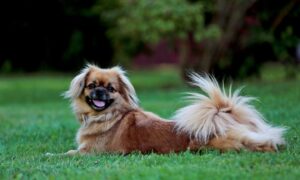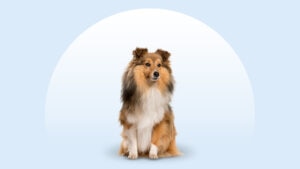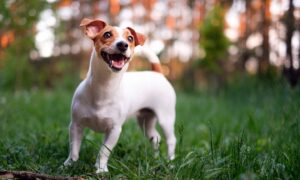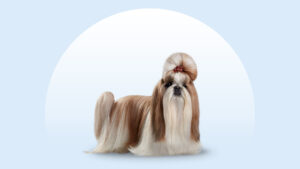Shiba Inu
Updated December 15, 2025
Shiba Inu
Updated December 15, 2025
The spirited and independent Shiba Inu isn’t related to the fox, but their personality can be just as feisty. These pups are bright, loyal best friends to pet parents who can provide plenty of mental stimulation and activity.
Affectionate, Aloof, Quirky
17–23 pounds
13.5–16.5 inches
13–16 years
Black and Tan, Red, Sesame, Cream
The Shiba Inu looks like a fox, acts like a cat, and has a scream that could get them cast in a horror movie. This quirky Japanese breed is an affectionate bestie with their favorite people but might give strangers the side eye.
With a mind of their own, they’re more likely to go along with the show if they think it was their idea in the first place—so train them early. Shibas are faithful companions, and they’re glad they had the brilliant idea to let you be their friend (consider it an honor).
Shiba Inu Characteristics
Shiba Inu Appearance
The Shiba Inu is a compact but highly athletic dog with an alert expression, especially when they’re excited or playing (unless they’re giving you the side eye). Whatever they’re doing, they always seem to have a smile on their face. These pups resemble a fox’s bigger cousin with their distinctive red coat (though Shiba Inu colors include black, tan, and sesame, too!), bushy tail, and fuzzy, pointy ears.
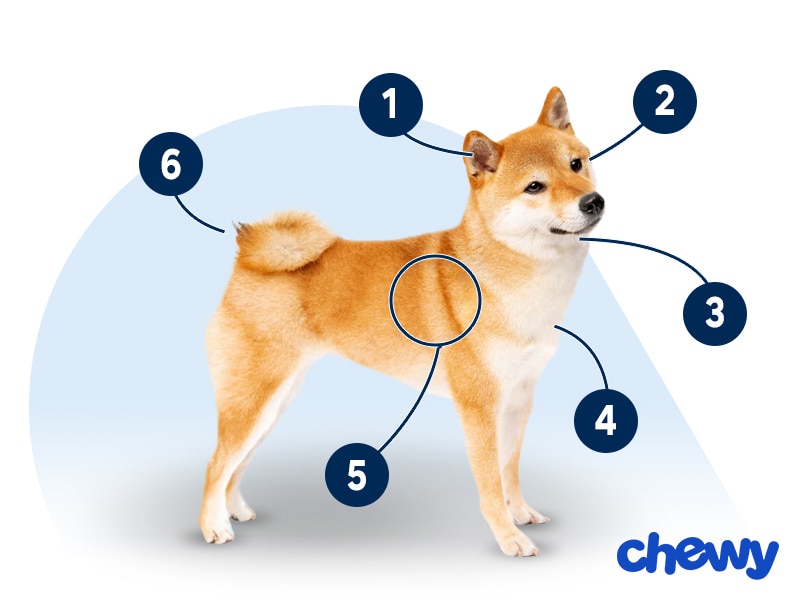
- Ears
Shiba Inu ears are small and set apart. They're naturally upright and triangular.
- Eyes
Their eyes are slightly triangular and dark brown. They have faint eyebrows.
- Nose
Shiba Inu noses are black, and their muzzle is fairly short and compact.
- Coat Length
Shiba Inu have a double coat with coarser outer hair that covers softer inner hair. Overall, their coat’s medium in length.
- Coat Color
Shiba Inu dogs come in three standard colors: black and tan, red, and sesame (red with black-tipped fur). Their undercoat is buff, cream, or gray. Urajiro are the white or cream markings on their underbelly, cheeks, throat, inside the ears, under the jaw and tail, around their bum, and on either side of their nose.
- Tail
A Shiba Inu's curled tail is long and curves upright over their back, like a question mark.
Shiba Inu Temperament
Shiba Inu dogs have strong, confident personalities and exhibit a mellow friendliness around their friends and family. But when it comes to strangers, they may suddenly seem aloof—cue the cat-like indifference.
These good-natured pups have an independent streak, so it’s best to keep them on a leash—there are too many fascinating sights and sounds in the world to catch their attention. Shiba Inu can be a bit selfish when it comes to sharing their things (relatable), so make sure they learn good manners early on. Socialization and training are a must with the breed, and you should start when your Shiba puppy is young.
When Shibas are feeling grumpy (maybe they’re not happy you denied them that third treat), they’ll let you know about their displeasure—loudly. But Shina Inu don’t bark. They have a unique vocalization, affectionately called the “Shiba Inu scream.”
Used more often than a true bark, it’s a high-pitched whine, kind of like the noise a cat makes crossed with the sound of a human baby crying. This is all the more reason to socialize and train your Shiba Inu early—training will help minimize any temper tantrums.
How to Care for a Shiba Inu
Shiba Inu need dedicated training time, but they are not high-energy pups who need a ton of exercise, nor do they have a lot of health problems. Their grooming needs are low, too, even though they shed. Their fur does need extra care during the fall and spring when they experience heavy shedding.
Grooming
Training
Diet
Exercise
Environment
Shiba Inu Health
The Shiba Inu lifespan is 13–16 years, and they generally don’t have many health issues. Here are a few to be aware of.
- Allergies: Common in Shiba Inu, signs of allergies in dogs include itchiness on the skin, feet, or ears. These can be caused by food or pollen, dust, and other things in the environment. Topical remedies, such as medicated shampoo, dietary changes, and medication, may help.
- Glaucoma: Glaucoma is a serious and painful eye problem that can cause blindness in dogs. Fortunately, your vet can perform a test to help detect the change in eye pressure that accompanies this disease. If caught early, glaucoma can be treated, but a dog who loses their eyesight can still live a happy, full life.
- Hip dysplasia: Hip dysplasia, which occurs when the ball and socket of the hip and thigh bones don’t properly fit, is an inherited condition that can be made worse if a pup is overweight. It eventually leads to arthritis and pain. More severe cases may require surgery, but the condition is often treated with medications, joint supplements, special diets, weight management, and/or physical therapy.
- Luxating patella: A luxating patella is when the kneecap slips in and out of its normal position. This uncomfortable condition can cause gait changes and cause arthritis. In severe cases, surgery may be needed.
Shiba Inu History
The Shiba Inu is an ancient breed with origins in Japan. For centuries, Shiba Inu were hunting dogs who were skilled at capturing birds and game. Three types of Shiba Inu developed in different regions of Japan:
- Mino: This Shiba Inu hails from the center of Japan and is a deep mahogany color without urajiro.
- San’in: This pup is larger, most often black, and comes from the northeastern region of Japan.
- Shinshu: These dogs also hail from central Japan and have rounder eyes and a sickle-shaped tail, instead of the curled tail that modern Shibas sport today.
In the mid-20th century, the Shiba Inu population declined significantly due to World War II and a subsequent outbreak of canine distemper in Japan. Thankfully, enough Shibas survived to preserve the breed, and the surviving dogs were predominantly the Shinshu type.
The first Shiba Inu was brought to the United States in the 1950s, and the first litter of Shiba Inu puppies in the U.S. was recorded in the late 1970s. The National Shiba Club of America was established in 1992. The American Kennel Club recognized the breed in the same year, and the rest is history.
Today, Shibas remain hugely popular in Japan (they’re the No. 1 companion dog there), and they’ve won plenty of hearts in the States, too. If you’re looking to add a Shiba as a pet, the average price for a Shiba Inu puppy is anywhere from $1,000 to $3,500. If you choose this route, pick a responsible breeder.
You can also consider Shiba Inu adoption. Reach out to Shiba Inu rescue organizations to adopt (like the Colorado Shiba Inu Rescue). You can also keep an eye out for the breed at your local animal shelter or rescue, or search Chewy’s database of adoptable dogs in your area.

